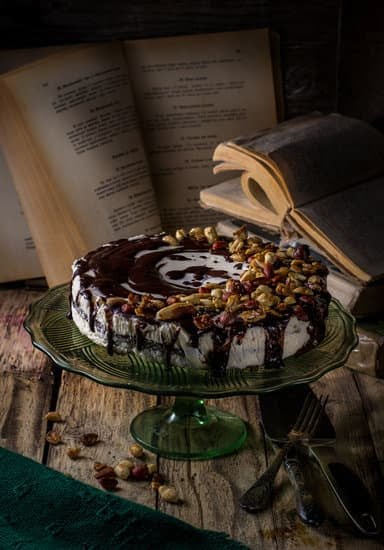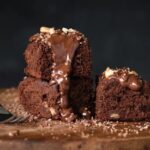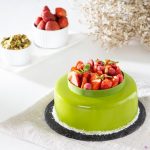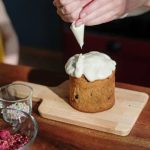Captivate readers with the allure and intricacy of fancy red velvet cake decoration. Red velvet cakes have long delighted dessert enthusiasts with their rich flavor and velvety texture, but it is the artful decoration that truly sets them apart. From delicate hand-piped patterns to elaborate sculpted designs, red velvet cakes offer a canvas for creativity and imagination. In this article, we delve into the world of fancy red velvet cake decoration, exploring its history, techniques, trends, and troubleshooting tips.
Red velvet cake has experienced a resurgence in popularity in recent years, with bakers using it as a blank canvas to showcase their artistic talents. Gone are the days of simple cream cheese frosting; now, bakers are pushing the boundaries of creativity by incorporating elaborate designs and intricate details into their red velvet creations. The beauty lies not only in the final product but also in the process of transforming an ordinary cake into a visually stunning masterpiece.
Join us on a journey through the fascinating world of fancy red velvet cake decoration. Discover the history behind this beloved dessert and its evolution from humble beginnings to becoming a staple at special occasions. Find out what makes the perfect red velvet cake base for decoration – whether you prefer a moist crumb or crave a deep chocolate flavor. We will also explore the essential tools and ingredients necessary for creating show-stopping decorations.
Get ready to unleash your inner artist as we delve into the techniques for sculpting, piping, and decorating red velvet cakes like a pro. From mastering smooth edges to creating intricate lace patterns, we will share expert tips and tricks to elevate your baking skills. We will also delve into embellishments and accents that add flair and elegance to fancy red velvet cakes.
Whether you are eager to tackle your first fancy red velvet cake or looking for inspiration for your next show-stopping creation, this article is your ultimate guide to all things related to red velvet cake decoration. So grab your apron and prepare to embark on a delicious and artistic adventure. Let the world of fancy red velvet cake decoration ignite your creativity and bring joy to both your taste buds and your eyes.
A Brief History of Red Velvet Cake
Red velvet cake has become a beloved dessert that is not only delicious, but also visually appealing. However, many may be unaware of the humble beginnings and rich history behind this iconic cake.
The origins of red velvet cake can be traced back to the 19th century, with its roots in the United States. The cake was initially made using non-alkalized cocoa, which resulted in a reddish hue when combined with other ingredients such as buttermilk and vinegar. The reaction between these ingredients and the cocoa created a chemical reaction that enhanced the natural red color.
Over time, red velvet cake gained popularity and became associated with luxury and indulgence due to its vibrant color and velvety texture. It was often served at special occasions such as weddings and holidays.
One interesting fact about red velvet cake is its connection to the famous Waldorf-Astoria Hotel in New York City. The hotel played a significant role in popularizing this dessert by including it on their menu in the 1920s. Since then, red velvet cake has continued to enchant taste buds around the world.
Aside from its history, red velvet cake also holds symbolic significance. Its deep reddish color represents love, passion, and celebration. It has become a staple at weddings and anniversaries, symbolizing everlasting love and happiness.
| Century | Significance |
|---|---|
| 19th Century | Origins of red velvet cake with non-alkalized cocoa |
| 1920s | Red velvet cake introduced at Waldorf-Astoria Hotel |
| Present Day | Synonymous with luxury and associated with celebrations |
Selecting the Perfect Red Velvet Cake Base
When it comes to creating a fancy red velvet cake decoration, selecting the right cake base is crucial. The texture, moisture level, and flavor of the cake can greatly affect the end result of your masterpiece. Here are some key factors to consider when choosing a red velvet cake base for decoration.
Firstly, moisture is essential for a delicious red velvet cake. A dry cake can ruin all your hard work in decorating it. Look for recipes that include ingredients like buttermilk or sour cream, as these add moisture to the batter. Be sure to follow the recipe instructions closely to ensure proper baking time and temperature, which will help retain the moisture in the cake.
Secondly, taste plays a significant role in creating an enjoyable red velvet cake. Traditionally, red velvet cakes have a hint of cocoa powder and a slightly tangy flavor from the acidic ingredients like vinegar or buttermilk. However, some variations use different flavorings such as vanilla or almond extract to enhance the taste. Consider your personal preference and experiment with different recipes until you find the perfect balance of flavors.
Lastly, texture is another important aspect to consider when selecting a red velvet cake base for decoration. Red velvet cakes are known for their moist and tender crumb texture. This is achieved by using a combination of all-purpose flour and either cake flour or cornstarch in the batter. The mixture of these flours creates a softer texture that complements the delicate nature of fancy decorations.
Once you have found the perfect recipe that meets your criteria for moisture, flavor, and texture, you can move on to other aspects of creating fancy red velvet cake decorations such as selecting tools and ingredients needed for your design.
| Factor | Considerations |
|---|---|
| Moisture | Choose recipes with ingredients like buttermilk or sour cream to keep the cake moist. |
| Flavor | Traditionally, red velvet cakes have a hint of cocoa powder and tanginess from acidic ingredients. |
| Texture | Use a combination of all-purpose flour and either cake flour or cornstarch for a moist and tender crumb texture. |
Essential Tools and Ingredients for Fancy Red Velvet Cake Decoration
Decorating a red velvet cake is an art form that requires the right tools and ingredients. To achieve the most elaborate and intricate designs, it is important to have a well-stocked toolkit and a variety of high-quality ingredients. In this section, we will explore the essential tools and ingredients needed for fancy red velvet cake decoration.
Tools for Elaborate Decorations
One of the first tools every decorator needs is a sturdy turntable. This allows for easy access to all sides of the cake during the decorating process. A good offset spatula is also essential for smoothly spreading frosting and achieving clean lines. Piping tips in various shapes and sizes will enable you to create different patterns and textures on your cake.
A piping bag or set of pastry bags is a must-have tool for applying frosting and other decorations. Investing in a range of couplers allows for quick tip changes without having to empty out the bag. Additionally, having a set of modeling tools can make sculpting intricate details much easier.
Must-Have Ingredients
High-quality food coloring gels or powder are crucial ingredients when it comes to making vibrant red velvet cakes. These allow for more concentrated colors without distorting the texture or taste of the cake. Depending on your design, various other food dyes may be necessary to achieve different shades.
Fondant is another ingredient that opens up endless possibilities for creating stunning decorations on red velvet cakes. It can be rolled out like dough and draped over cakes for a smooth finish, or shaped into intricate figures and designs.
Edible embellishments such as silver or gold dragées, sprinkles, edible glitter, or pearl luster dust add shimmering accents to any red velvet cake design. Fresh flowers can also be used to add elegance and beauty to the overall appearance.
By having these essential tools and ingredients at hand, decorators can unlock their full creativity when it comes to fancy red velvet cake decoration. The next section will delve into the techniques and tips for mastering the art of sculpting red velvet cakes into visually appealing shapes and forms.
Mastering Red Velvet Cake Sculpting
When it comes to fancy red velvet cake decoration, mastering the art of sculpting is essential. Creating visually appealing shapes and forms from a red velvet cake requires precision and skill. In this section, we will break down the process of cake sculpting and provide expert tips and techniques to help you achieve smooth edges, clean cuts, and intricate designs.
Preparing Your Red Velvet Cake for Sculpting
Before you can begin sculpting your red velvet cake, it is important to ensure that it has cooled properly. The cake needs to be firm enough to handle without crumbling or losing its shape. Once your cake has cooled completely, you can level the top if necessary to create an even surface for carving.
Creating Sculpted Shapes with Templates
One technique for achieving precise shapes when sculpting a red velvet cake is by using templates. Simply print out or draw the desired shape onto a piece of parchment paper and cut it out. Gently place the template on top of your cooled cake and use a serrated knife to carefully carve along the outline. This method allows for consistent results and enables you to create intricate designs such as hearts, animals, or even 3D objects.
Filling and Assembling Sculpted Cake Tiers
If you plan to create a tiered sculpted red velvet cake, proper filling and assembly are crucial. Fill each layer with frosting or ganache before stacking them together. To secure the tiers in place, insert dowels or skewers into the bottom layers to provide stability. This ensures that your sculpted masterpiece remains intact throughout transportation and display.
Frosting Techniques for Sculpted Red Velvet Cakes
Once your red velvet cake is carved into its desired shape, it’s time to frost it. Smooth buttercream or fondant over the entire surface using an offset spatula or a bench scraper. This helps to create a clean foundation for your decorations and adds an extra layer of stability to the sculpted cake.
Mastering the art of sculpting red velvet cakes requires patience, practice, and attention to detail. By following these tips and techniques, you’ll be able to create stunning designs that will impress everyone who lays eyes on your edible masterpiece.
The Art of Piping and Decorating
Red Velvet Cake decoration is not just about sculpting and shaping the cake, but also about the art of piping and decorating. The right techniques and methods can take your red velvet cake design to new heights, making it a show-stopping centerpiece for any occasion.
In this section, we will explore different piping techniques and how they can be used to enhance red velvet cake decoration. We will also showcase examples of stunning designs using frosting, including rosettes, filigree, and lace patterns.
Piping is an essential skill when it comes to decorating red velvet cakes. There are various piping techniques that can be used to create different effects and designs on the cake’s surface. One popular technique is the rosette, where buttercream or cream cheese frosting is piped in a circular motion to create elegant swirls resembling flowers. This technique works particularly well on the top or sides of the cake.
Another technique that adds a touch of sophistication to red velvet cakes is filigree piping. This involves creating intricate lace-like patterns using royal icing or fondant. It requires steady hands and a fine tip piping bag to achieve delicate details on the cake’s surface. Filigree piping is often used as borders or accents around other decorations.
Lace patterns are another way to elevate your red velvet cake decoration. Using a lace mold with edible lace mixtures made from ingredients such as sugar or gum paste, you can transfer intricate lace patterns directly onto the surface of your cake. This creates a stunning effect reminiscent of delicate fabric draped over the dessert.
When it comes to decorating with frosting, there are countless possibilities for designs that can be achieved on a red velvet cake. From simple borders and patterns to more elaborate motifs like flowers or monograms, frosting allows you to personalize your cake according to your preferences and the occasion.
By mastering piping techniques and exploring various design ideas, you can truly elevate your red velvet cake decoration skills. Whether you opt for elegant rosettes, delicate filigree patterns, or intricate lace designs, the art of piping and decorating adds flair and beauty to your creations. With practice and creativity, you can create red velvet cakes that not only taste delicious but also look like edible works of art.
Embellishments and Accents
Edible Embellishments
When it comes to creating fancy red velvet cake decorations, adding edible embellishments can take your creations to the next level of flair and elegance. There are various options that can be used to enhance the visual appeal of your red velvet cake designs.
One popular choice is incorporating fresh flowers into your cake decoration. Flowers provide a natural and beautiful touch that can complement any design. However, it is important to ensure that the flowers you use are safe for consumption and have not been treated with any chemicals. It is recommended to use organic and edible flowers such as roses, violets, or pansies.
Another way to add flair to your red velvet cakes is by using edible gold leaf. This luxurious touch adds a touch of elegance and glamour to any design. Whether you choose to cover an entire tier with gold leaf or apply it as accents on specific parts of the cake, it will surely create a stunning effect.
For those looking for more intricate and detailed decorations, sugar work is a fantastic option. Sugar work involves sculpting sugar into various shapes like flowers, bows, or delicate filigree patterns. These edible sculptures can then be used as decorative accents on your fancy red velvet cakes.
Non-Edible Accents
While edible embellishments are a popular choice for fancy red velvet cake decoration, there are also non-edible accents that can be used to elevate the overall look of your creations.
One commonly used non-edible accent is ribbons or fabric bands wrapped around the bases of each cake tier. These bands can match the color scheme or theme of your design and add a touch of class and sophistication.
Another option for non-edible accents is utilizing decorative cake stands or pedestals. These stands come in various styles and finishes, such as silver, crystal, or porcelain. Placing your red velvet cake on an elegant stand can create a stunning centerpiece for any occasion.
Lastly, consider incorporating cake toppers or figurines that align with the theme or event you are celebrating. These toppers can be anything from intricate sugar sculptures to personalized figurines representing the person or event being celebrated. Cake toppers are a great way to add a personal touch and make your fancy red velvet cake truly unique.
Red Velvet Cake Decoration Trends
Red velvet cakes have become more than just a dessert; they have turned into an artistic canvas for creative designs. With the increasing popularity of cake decorating, red velvet cakes are taking center stage as an elegant and versatile choice for any occasion. In this section, we will explore some of the latest red velvet cake decoration trends that are sure to inspire your next baking masterpiece.
For weddings, couples are opting for elegant and sophisticated designs on their red velvet wedding cakes. One popular trend is the use of metallic accents, such as gold or silver leaf, to add a touch of glamour and opulence to the cake. Another trend is incorporating intricate sugar work, like delicate lace patterns or elaborate filigree, which adds a romantic and vintage feel to the dessert.
Birthdays call for celebration and fun, and red velvet cakes can reflect just that. One exciting trend is creating whimsical designs using bright colors and playful shapes. Think polka dots, stripes, or even a cake in the shape of a favorite cartoon character or animal. These creative approaches add a youthful and joyful touch to birthday celebrations.
Holidays provide the perfect opportunity to showcase festive designs on your red velvet cake. For Christmas, consider decorating your cake with snowflakes made from edible glitter or delicate fondant poinsettias. Halloween calls for spooky creations featuring bats, cobwebs, or eerie pumpkins made from orange-tinted frosting on a blood-red background.
No matter the occasion, personalization has become a major trend in red velvet cake decoration. Adding initials or monograms using piped frosting or edible confetti letters can make any cake unique and meaningful. Furthermore, incorporating fresh flowers that match the color scheme of an event brings natural beauty to the dessert table.
Troubleshooting Common Red Velvet Decoration Challenges
Red velvet cake decoration can sometimes present challenges, but with the right solutions, you can overcome any obstacle and achieve beautiful results. In this section, we will address common issues that may arise during the process of decorating a red velvet cake and provide expert solutions to help you troubleshoot these challenges.
One common challenge faced during red velvet cake decoration is cracked fondant. Fondant is a popular choice for creating smooth, flawless finishes on cakes, but it can crack if not handled properly. To prevent cracking, make sure your fondant is rolled out evenly and not too thin.
If cracks start to form, try gently smoothing them out with your fingertips or a small amount of vegetable shortening. You can also use pieces of extra fondant to patch up any cracks by gently pressing them onto the cake.
Another challenge that may occur is bleeding food dyes. Red velvet cake gets its vibrant color from red food coloring, which can sometimes bleed onto the frosting or other decorative elements. To prevent bleeding, make sure your red velvet cake is fully cooled before applying frosting or other decorations.
You should also avoid using too much liquid-based food coloring, as this increases the chance of bleeding. If you do experience bleeding, carefully blot away any excess color with a clean paper towel and touch up the affected areas with additional frosting or decorations.
Stability of the cake structure is another potential challenge when it comes to red velvet cake decoration. Red velvet cakes are typically moist and tender, which can make them more prone to crumbling or collapsing under the weight of heavy decorations.
To ensure stability, it’s essential to use proper support systems such as dowels or straws for tiered cakes or adding extra layers for added structural integrity if necessary. Additionally, consider chilling your decorated cake in the refrigerator for a short period before serving to help maintain its shape.
By addressing these common challenges and employing expert solutions, you can overcome any obstacles that may arise during red velvet cake decoration. Remember, practice makes perfect, so don’t be discouraged if your first attempts aren’t flawless. With patience and perseverance, you can unleash your artistic side and create stunning red velvet cake designs that will impress both the eye and the taste buds.
Conclusion
In conclusion, the art of fancy red velvet cake decoration offers a captivating and creative outlet for individuals to unleash their artistic side. Throughout this article, we have explored the allure and intricacy of this unique form of cake decoration, highlighting its growing popularity as a canvas for creative designs.
From tracing the humble beginnings of red velvet cake to providing tips and techniques for mastering sculpting and piping, we have covered all aspects necessary to achieve stunning red velvet cake decorations.
Selecting the perfect red velvet cake base is essential when it comes to creating beautifully decorated cakes. The balance of moisture, flavor, and texture can make or break a cake design. By exploring different recipes and variations, individuals can find the ideal foundation for their creations.
Moreover, we have discussed the essential tools and ingredients needed for achieving elaborate red velvet decorations. From food dyes to fondant, piping bags to edible embellishments, having the right supplies in hand is crucial in bringing one’s artistic vision to life.
It is important to remember that practice makes perfect when it comes to mastering red velvet cake decoration. With patience and perseverance, anyone can learn how to sculpt intricate shapes, achieve clean cuts, and create visually appealing designs using different piping techniques. Adding various embellishments and accents such as fresh flowers or edible gold leaf can further elevate the visual appeal of these fancy cakes.
Frequently Asked Questions
How can I decorate a red velvet cake?
There are numerous ways to decorate a red velvet cake, allowing for creativity and personal preferences. One common approach is to frost the cake with a rich cream cheese frosting, which complements the flavors of the cake exceptionally well. For an elegant touch, you could pipe decorative designs using additional cream cheese frosting or buttercream in various colors.
Adding edible garnishes like chocolate curls, sprinkles, or fresh berries can also enhance the visual appeal of the cake. Another option is to use fondant to create intricate decorations such as flowers or shapes that can be placed on top of the cake.
How can I enhance the Flavour of my red velvet cake?
To enhance the flavor of your red velvet cake, there are several techniques you could try. First, consider adding an extra layer of depth by incorporating a hint of additional flavorings such as vanilla extract or almond extract into the batter. For those who appreciate a tangier taste profile, adding a small amount of buttermilk can provide a pleasant contrast to the sweetness.
You may also experiment with incorporating complementary spices like cinnamon or ginger in small quantities to add complexity without overpowering the distinctive red velvet flavor. Finally, consider using high-quality ingredients such as premium cocoa powder and real vanilla beans rather than artificial substitutes for richer and more pronounced flavors.
What makes red velvet cake so expensive?
The costliness of red velvet cakes often stems from several factors that contribute to their higher price compared to other types of cakes. Firstly, obtaining true vibrant red coloration traditionally required natural ingredients like beetroot juice or considerable amounts of expensive food coloring agents; this inconvenience added production costs that were then reflected in the final price.
Secondly, good quality cocoa powder used in making genuine red velvet cakes tends to be more expensive compared to regular cocoa powder due to its higher purity and richer flavor profile. Lastly, since cream cheese frosting is commonly paired with red velvet cakes, this lavish ingredient could contribute to their overall expense since cream cheese itself tends to be pricier than other types of frosting options.

Welcome to our cake decorating blog! My name is Destiny Flores, and I am the proud owner of a cake decorating business named Cake Karma. Our mission is to provide delicious, beautiful cakes for all occasions. We specialize in creating custom cakes that are tailored specifically to each customer’s individual needs and tastes.





